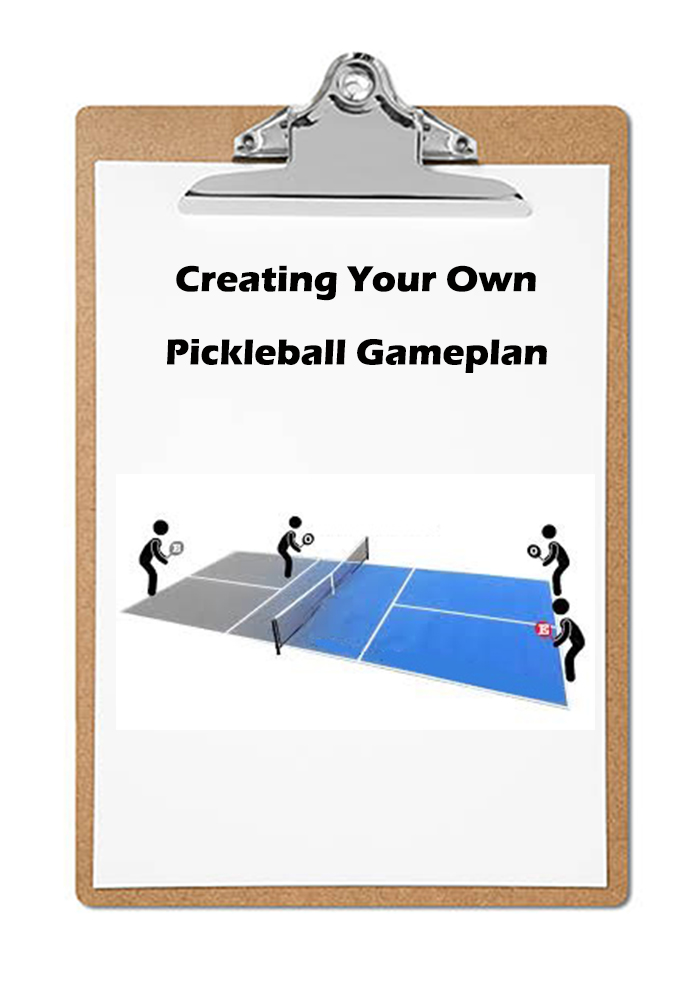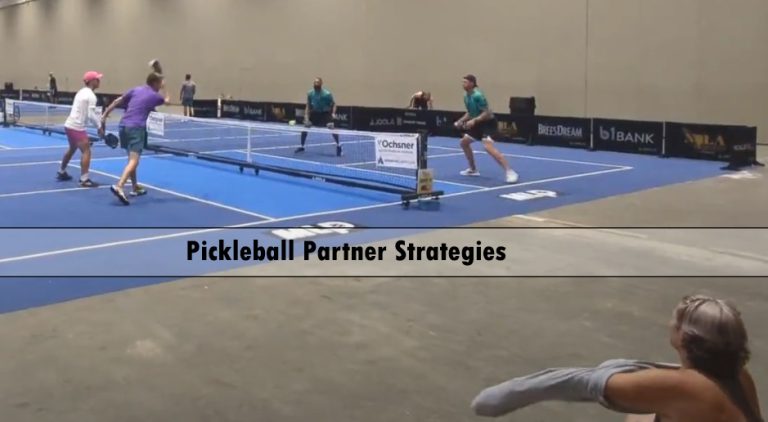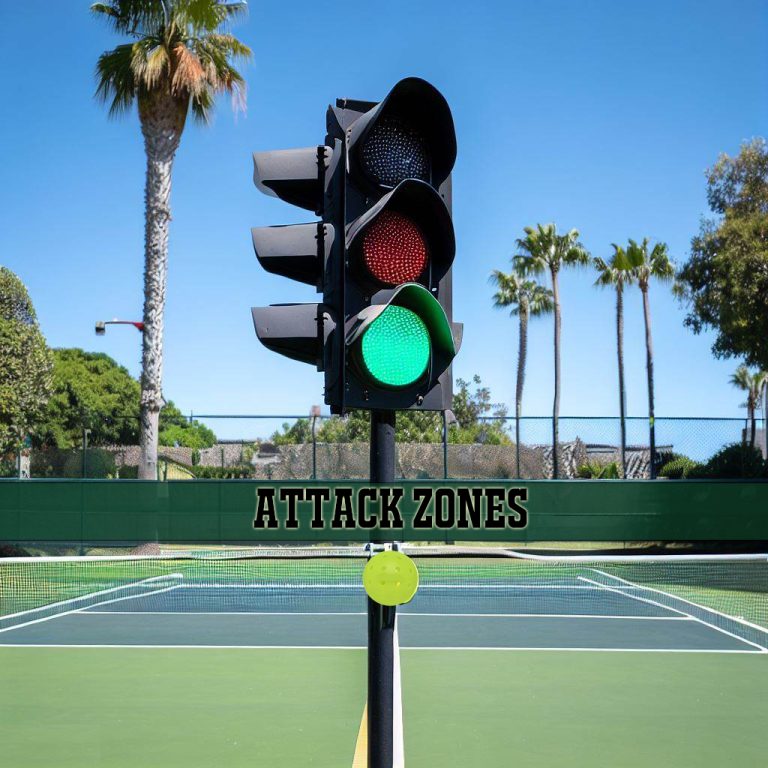The Guide to Dinking in Pickleball
The Comprehensive Guide to Dinking in Pickleball
Yesterday, we explored the importance of getting to the kitchen in pickleball. But what do you do when you get to the kitchen? Dinking in Pickleball.
If you and your partner have control of the kitchen line, and have your opponents pinned deep, keep up the pressure. Don’t allow them to advance. When you have your opponents pinned to the baseline, hit shots that require the opponents to move laterally to hit the ball. Aim these shots right next to either foot. This will make it very difficult for them to advance. If the opposing team does establish themselves at the kitchen, slow the game down and begin to dink. Be patient and always dink with a purpose. The purpose of dinking in pickleball is to wait for your opponents to make an error by hitting the ball into the net, or leaving a ball high that can easily be put away. Refer to the different Height Zones in Pickleball that we discussed previously. Let’s dive into understanding dinking with this guide, so that we know what to do when we establish ourselves at the kitchen line.

Understanding the Art of Dinking
Dinking is a fundamental skill in pickleball, allowing players to control the pace of the game and set up offensive opportunities. This guide will delve deep into the various types of dinks and how to execute them effectively.
Dinking in Pickleball: Push Dink
What is a Push Dink?
A push dink is a soft shot that is executed with a pushing motion, aiming to place the ball just over the net in the opponent’s non-volley zone.
How to Perform a Push Dink
Step forward with your lead foot, keeping your paddle face open. Use a gentle pushing motion, guiding the ball over the net.
Grip and Paddle Angle for Push Dink
Use a soft grip, allowing for better touch and control. The paddle angle should be slightly open to lift the ball over the net.
Aiming the Push Dink
Aim for the opponent’s feet or the middle of their non-volley zone to limit their shot options.
Dinking in Pickleball: Reset Dink
What is a Reset Dink?
A reset dink is used to neutralize an opponent’s aggressive shot, returning the rally to a neutral state. It’s a defensive shot that’s dropped softly into the opponent’s non-volley zone.
How to Perform a Reset Dink
Stay low and absorb the pace of the incoming ball, using a soft touch to drop the ball into the non-volley zone.
Grip and Paddle Angle for Reset Dink
Maintain a soft grip for better absorption of the ball’s energy. The paddle angle should be open to ensure the ball clears the net but drops quickly, and doesn’t bounce too high.
Aiming the Reset Dink
Target the center of the opponent’s non-volley zone to reduce their angles of attack.
Differences Between Push Dink and Reset Dink
The primary difference lies in their purpose. While a push dink is more offensive, aiming to move the opponent, a reset dink is defensive, aiming to neutralize the rally.
Dinking in Pickleball: Other Types of Dinks
Cross-court Dink
This dink is aimed diagonally across the court, targeting the opponent’s opposite side.
How to Perform a Cross-court Dink
Use a controlled, slicing motion to send the ball over the net, ensuring it lands in the non-volley zone diagonally across. By slicing the ball, the rotation will cause it to spin back to the net when it bounces.
Where to Aim a Cross-court Dink
Aim for the farthest corner of the opponent’s non-volley zone to maximize the distance they have to cover. However, be cautious when hitting dinks at the corners of the non-volley zone. Hitting these types of shots and angles could set your opponents up for an ATP (Around-The-Post) or Ernie, catching you off guard.
Which Paddle Angle to Use for a Cross-court Dink
The paddle should be slightly open, allowing for the ball to clear the net while maintaining a low trajectory.
Backhand Dink
Executed using the backhand side of the paddle, this dink is ideal for balls coming to your non-dominant side.
How to Perform a Backhand Dink
With a soft touch, use a controlled backhand motion, ensuring the ball clears the net and lands in the opponent’s non-volley zone.
Where to Aim a Backhand Dink
Aim for the center or slightly to the side of the opponent’s non-volley zone, making it difficult for them to predict and counter.
Which Paddle Angle to Use for a Backhand Dink
The paddle should be perpendicular to the ground, allowing for a straight shot over the net.
Forehand Spin Dink
This dink introduces spin by brushing the ball with the paddle during the forward motion. The spin makes it challenging for opponents to predict the ball’s bounce and direction. The spin causes opponents to have less time to react, because the ball spins towards them after the bounce.
How to Perform a Forehand Spin Dink
Brush the ball with the paddle during the forward motion, imparting spin to the ball.
Where to Aim a Forehand Spin Dink
Aim for the center of the opponent’s non-volley zone, as the spin will make it difficult for them to predict the ball’s direction.
Which Paddle Angle to Use for a Forehand Spin Dink
The paddle should be slightly tilted, allowing for the brushing motion that imparts spin to the ball.
Dinking in Pickleball
In this guide on Dinking in Pickleball, we’ve delved deep into the nuances of this essential skill. From understanding the strategic importance of the kitchen line to mastering various types of dinks like the Push Dink, Reset Dink, Cross-court Dink, Backhand Dink, and Forehand Spin Dink, we’ve covered it all. Each dink serves a unique purpose, whether it’s to maintain an offensive stance, neutralize an aggressive shot, or introduce unpredictability with spin. Remember, the art of dinking is not just about hitting the ball; it’s about patience, strategy, and always having a purpose behind each shot. As you continue your pickleball journey, stay tuned for our next article, which will focus on the dynamics of speed up shots in pickleball, another crucial aspect to elevate your game.








2 Comments